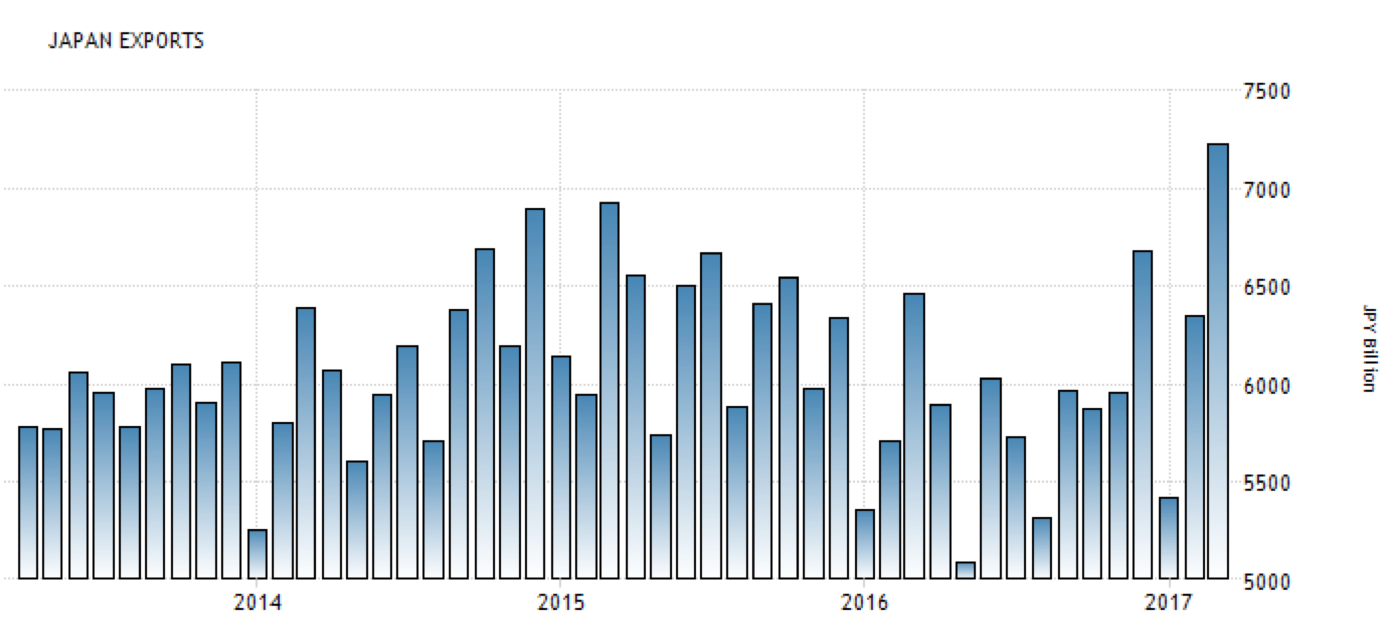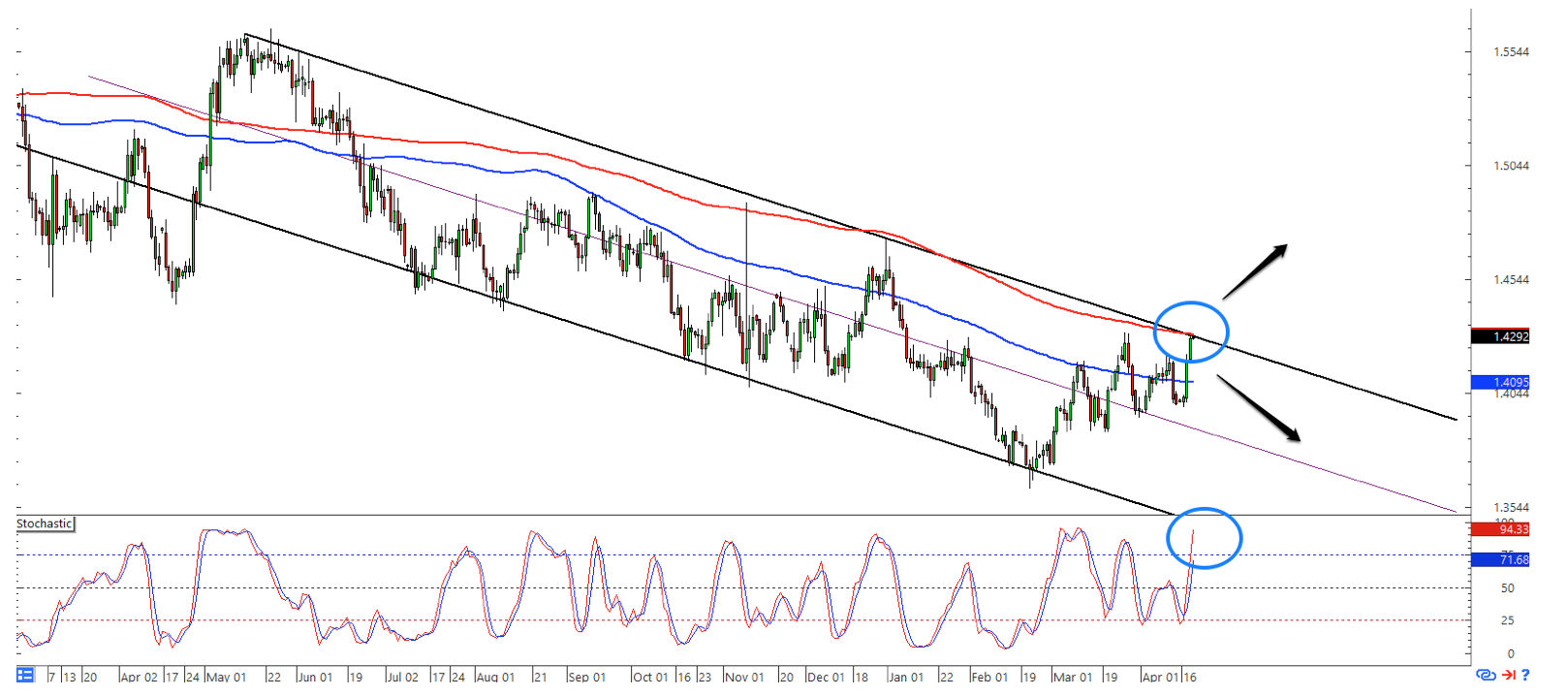Daily Insights Report 20/04/17
- 20 Apr 2017
Japan’s exports showed to have risen the most in the last two years. Exports from Japan rose 12.0% year-over-year in March of 2017, compared to a 11.3% gain in February, which is when markets expected a 6.7% rise. This is the fastest increase since January 2015, because of higher sales to China and the US. The image below shows how export data has changed in Japan over time.

– The USD was up 0.4% against the JPY at 108.84, after ending at a five-month high of 108.40 on Tuesday. Due to falling inflation expectations in the US meant that the outlook for the Dollar was still relatively uncertain. This can be seen as a result of the futures market lowering assigning a lower probability of a rise in interest rates at the Federal Reserve’s June meeting.
– Against the USD, the EUR was down 0.2% to reach $1.0711.
Commodities
– Oil dropped more than $2 after unexpected news surfaced.Brent oil settled 3.6% weaker at a two-week low of $52.93 a barrel after the latest report from the Energy Information Administration (EIA) showed that US gasoline inventories unexpectedly rose for the first time in nine weeks while US crude production hit its lowest level since August 2015. Total crude stocks, however, did show to have fallen for a second consecutive week. West Texas Intermediate (WTI) crude was down 3.7% in late trading to reach $50.53.
– Gold was down $10 to reach $1,279 an ounce. This happened after hitting a five-month intraday high of $1,295 on Monday.
Euro (EUR)
Germany – Consumer Price Index (March)
Early estimates show that Germany’s consumer prices rose by 1.6% year-over-year in March, which is somewhat slower from the 2.2% increase since in February. February’s growth was actually the fastest pace of increase since August 2012. Inflation of energy and food prices eased slightly. Energy prices rose 5.1% year-over-year, after jumping 7.2% in February. The growth of food prices slowed slightly to 2.3% year-over-year from 4.4% previously. The growth of prices of services has almost halved itself to 0.7% from 1.3% in February.
The price pressure mainly comes from higher commodity prices, instead of a sudden change in demand. The relatively weak Euro has also been supporting inflation pressures. Higher prices for oil and metals, in particular, pushed input prices higher for German producers, with the rate of increase reaching almost a six-year high, as this was shown by the Markit manufacturing PMI. After seasonal adjustments to the 1.6%, it may be possible that the inflation level may reach 2.1%.
Japanese Yen (JPY)
Industry Activity Indexes (February)
A forecast for 0.2% for this data is likely to come for February after seeing a flat reading in January. The rise comes from improved consumer confidence, which has itched upwards in the early portion of 2017 thanks to the Yen’s depreciation and improved domestic prospects. However, further demand for medical and health services will continue to grow because of the aging population of Japan.
Technical Analysis
EURAUD
Looking at the daily chart of the EURAUD, we can see a channel has been made and currently the pair is at the top of the channel. The stochastic indicator is suggesting that the pair is currently overbought. The pair is currently in the middle of falling averages of both 100 and 200 day time horizons. A shorting strategy with a bearish outlook may be feasible at this point.


